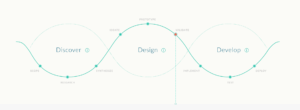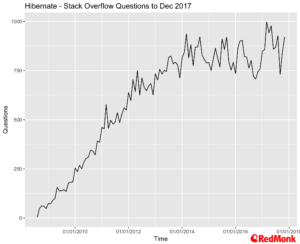TL; DR: Being on the cutting edge while still being completely enterprise focused is hard. SAP is showing that there is a path.
SAP hold their annual developer event series, TechEd across three continents over a two-month period each year. We recently attended TechEd Barcelona and had the opportunity to get updates from a number of the SAP executive team. TechEd is changing as an event, and has evolved yet again since the promotion of Bjoern Goerke to CTO in April of this year.
For those looking at SAP from an external perspective it is essential to understand the importance of ABAP, the 4GL language first introduced in the 1980s, in the entire SAP ecosystem, and understand how ABAP frames a lot of what SAP does in the context of a developer event.
The Evolving Cloud Native Story
SAP recognise that enterprises need a spectrum of tools, suitable for different types of use cases, applications, developers and end users. Their support, and membership, of organisations such as the Cloud Native Compute Foundation and the Cloud Foundry Foundation are indicative of this.
There are several elements to consider here. Firstly, CTO Bjoern Goerke is working across SAPs engineering and product organisations and asking them to not just look outside at what is happening, but to become far more involved with the communities and use these solutions where applicable rather than developing something in-house. This is also driving a wider cultural change at SAP which spans everything from business and legal approaches, to product ownership, development and strategic direction. This is a difficult transition, make no mistake about it.
As we have noted before this exactly the type of change we have seen at companies such as Microsoft. For all of the large vendors participation in opensource communities is no longer optional, it is a commercial necessity. But properly engaging takes time.
On saying all of this, it is not particularly well known that SAP has a solid track record of contributions to projects which they are involved, Cloud Foundry being an obvious example. We anticipate a similar set of focused efforts around specific CNCF projects, and the wider opensource ecosystem in the future.
Partnerships, Partnerships – Google and Apple
During my time on the exhibition floor I had the opportunity to eaves drop on developer advocates from both SAP and Apple as they shared some tips. This may seem like a minor thing, but these are the individuals who are the first line representatives of major companies coming together to figure out how to meet their customer’s needs. That can only be a good thing.
MyPOV: The update to SAP Cloud SDK for iOS focuses on taking out a huge amount of heavy lifting. Developer productivity for the win #SAPTechEdِ
— Fintan Ryan (@fintanr) November 14, 2017
A whole host of extra integrations and functionality for SAP SDK for iOS were announced. All of these were aimed at making it quicker and easier for developers to get SAP centric apps up and running on iOS. We will touch on SAP Build.me a bit later in this piece, but it is fair to say the combination is reaching the point of being very compelling.
Google Cloud CTO Brian Stephens took centre stage to talk about a variety of areas that SAP and Google are working together on. The most interesting of these is the previously announced work on Data Custodian. I won’t delve deeply into this here, but suffice to say it is very, very interesting from a compliance standpoint and is something we will return to in the future.
Nuts and Bolts: Hibernate
Hibernate is still incredibly widely used, solid work #SAPTechEdِ https://t.co/UDsDlmPmpa
— Fintan Ryan (@fintanr) November 14, 2017
This is one of those announcements that strikes people as really boring, but is actually very significant in terms of developer productivity. Hibernate is one of those technologies that has been quickly forgotten by many early adopters, but a cursory look on StackOverflow reveals just how frequently it is used.
Additional support for Hibernate dialects is a small, but substantial, gain for the productivity of enterprise developers.
Hype, Definitions and Reality
Whenever you talk with SAP technologists about product specifics and futures, one particular line will emerge – “we will announce it when its ready”. Too this we should also add a second – “we don’t work in hype”.
This is a solidly German view of the world, but it also leads SAP to underplay some of their offerings. As we will return to later they are developing a set of extremely solid machine learning offerings, which they are calling machine learning not AI. Sadly, this misses some of the marketing froth in the industry – but if this is at the cost of actually delivering what you are promising rather than a PowerPoint slide I, for one, am all in favour of it. That said there is a definite level of froth in some of the higher-level marketing materials versus the discussions with direct product leads.
The other key aspect to understand with SAP is that they do not take the decision to productise something lightly. As we were reminded on several occasions, when customers developer on SAP they expect longevity of support. In emerging areas from Blockchain to Cloud Native to front end technologies SAP are carefully considering what they wish they support.
SAP Hana as a Component
One of the more interesting demos we saw during TechEd came from Amazon and SAP. In this example sensor data from a geographically dispersed network entered the application, was initially processed by lambda functions (AWS Greengrass) and goes through a series of steps (a combination of several Lambda functions and Kinesis), then using the geospatial capabilities of SAP Hana, back through lambda and eventually a front-end application.
There is a lot to consider here. As we have previously noted, serverless approaches are fast becoming a key component for dealing with volume compute. This kind of scenario, where a specific piece of software is used as part of a chain of events in a serverless architecture, is an abundantly obvious approach in terms of cost, performance and scalability.
We have no doubt that we will see applications following this type of pattern being developed in the short to medium term by forward looking SAP customers, and those beginning to leverage capabilities such as the geospatial functionality that exist in offerings like Hana.
Machine Learning as a Service
As we have noted in the past that the vast bulk of developers will consume machine learning as a service. A piece of functionality that they consume in their app, but not explicitly a model that they themselves have developed.
SAP have already made a number of services such as image classification, time series analysis, translation and so forth available via their Leonardo offering. These are all standard services, and welcome. But you begin to see the future directions when you look at areas such as the Service Ticket Intelligence api. This is a direct enhancement of a traditional business flow that a developer can simply and easily use.
The offerings here are straight forward and to the point. The focus on integration into and across other SAP offerings is clear to see and we look forward to seeing the expansion of these offerings over the coming year.
Build.me & Design Lead Development
There are multiple variants of design first approaches for development, particularly around front-end apps (e.g. for mobile devices) and SAPs approach is called “design lead development”. SAP have tied together most of their thinking and approach under the build.me banner.
Two pieces really stick out here, firstly they document an initial approach around project design, scoping and prototyping that is clear and straight forward to leverage. There is nothing spectacular to this, just some solid guide lines and tutorials – but there are definitely some helpful hints here.
More interestingly they also provide a way to rapidly iterate on hand drawn designs to discover what is quickly working and not working with customers. The part that really grabbed my attention was seeing usage heat maps overlaid on the designs, all without ever creating a single line of code. Now there are a variety of rapid prototyping tools out there but build.me is definitely a useful addition.
Tutorials
SAP have been investing heavily in various aspects of their developer experience, and possibly none more so than their tutorials. This is a common, and welcome, thread across all of the major vendors. The days of people waiting to do a four-day training course to get started with a new technology are long gone. Providing people with an easy, time bounded, set of tutorials is a solid move.
Now there is a still some way to go with the tutorials. The navigation is quite clunky and non-intuitive, and the initial content can be pretty intimidating for people not familiar with the SAP ecosystem. On saying that, all of these aspects are addressable, and in terms of a starting point this is a solid move forward.
A New Kind of Developer?
The conundrum for SAP is how to attract new developers while keeping their existing users happy. TechEd is not going to be this forum, but SAP have clearly recognised this and are reaching out into other communities
ABAP developers are, by necessity, not the most forward-looking segment of the developer community. This gives SAP a very delicate balancing act. On saying this there are some useful steps being taken by the developer community itself, such as abapGit.
This leads to a second conundrum – one which is harder for SAP to address. Almost by definition most SAP software will sit under the auspices of a very traditional enterprise IT organisation. In order for developers to get access to the resources they have to negotiate the gambit of IT policies, restrictions, approvals and politics. They rarely will invest time here, and will just find alternative tools to use.
So, for SAP to engage with a new set of developers they also need to engage, heavily, with the existing IT organisation and bring their CIOs on a journey. Our sense is that SAP understand this, and are working on educating their customer base. But this is an organisational challenge and requires a lot of work on the digital literacy front.
Reaching Beyond?
The biggest challenge for SAP is how to reach beyond their traditional developer base. Their developer base is not going anywhere, but TechEd is also not a conference which will attract emerging communities – and this represents a significant risk for any technology company.
In some of the movements under Bjoern Goerke we see an attempt to address this wider audience. Participation in groups such as the Cloud Native Compute Foundation, Cloud Foundry and so forth will help SAP on this journey. But SAP also need to be a part of the wider conversation that is happening, from meetups to developer events to communities that are not part of their core focus. All of this is possible – indeed companies such as Microsoft are showing the way – but it takes time and significant investment.
Beyond the Looking Glass: Containers for Everyone Else
I also spoke during TechEd on the subject of containers. While it can seem, at times, that cloud native technologies are dominating the entire software development world – the reality is that they are not. It is still early days, and many enterprises are just getting started on their cloud native journey.
As always at RedMonk we frequently speak about Continuous Integration being the Cloud Native On-Ramp, and this talk was no different. Some up-front infrastructure work and spending time on design will go a lot further towards making any journey with containers successful than anything else.
Disclosures: SAP, Google, Microsoft, Amazon, The Cloud Foundry Foundation and The Linux Foundation (parent of the Cloud Native Compute Foundation) are current RedMonk clients. SAP paid my T&E.

